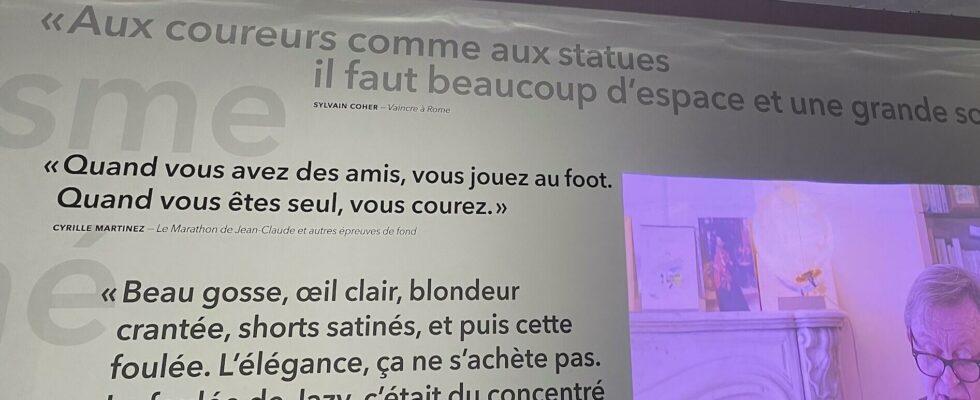On the occasion of the Paris 2024 Olympic and Paralympic Games, the Musée de la Poste is offering the exhibition Marathon, the messenger’s race with the subject of this sporting event invented by Michel Bréal on the occasion of the first modern Olympic Games organized in 1896 in Athens.
3 mins
The marathon runners Paris 2024 will have to cover the traditional 42.195 kilometers. Legend has it that the Battle of Marathon, in 490 BC, saw the Athenians repel an attempted landing by the Persians. Philippides, a messenger runner, had crossed the forty kilometers which separated the scene of the battle from Athens to announce the victory before dying. A legend which gave ideas for reflection on running.
Through a stroll where we can discover 160 works and objects, Jean-Marc Huitorel and Dominique Marchès, co-curators, have designed a particularly rich exhibition, which shows the importance of running throughout the ages. Labeled Cultural Olympiad by Paris 2024, this exhibition also questions the place of art in sport.
Art can speak about sport, as much as sport can speak about art.
“ From the beginning of our work, we thought of Philippides, that is to say the postman, the walk, the run, the route and the landscape, explains Jean-Marc Huitorel. From there, we did what we usually do together, an exhibition of contemporary art, with objects that came first of all from the post office, and also from the National Sports Museum in Nice. This results in an exhibition that leads to reflection around art and sport, now a real subject. »
According to Jean-Marc Huitorel, art can speak about sport, as much as sport can speak about art. It’s like a back and forth. Not to mention the human stories. Example: that of Boughéra El Ouafi, whose jersey is on display. French athlete and worker born in 1898 in Algeria and died on October 18, 1959 in France, he became the first African athlete to win an Olympic medal by winning the marathon at the Summer Games in Amsterdam in 1928.
Worker at Renault, soldier in the First World War, his glory was fleeting. The day after the Olympics, he accepted an American tour where he performed in circuses, sometimes racing against animals. For “acts of professionalism”, he will be banned by the French Athletics Federation, deprived of his title and disqualified for life. He lived in poverty and died under bullets in Paris, in the middle of the Algerian war, for reasons that remain unknown. Alain Mimoun associated it with his Olympic marathon title, acquired in Melbourne in 1956.
Art to explain
Literature has been interested in Émil Zátopek, nicknamed “the Human Locomotive” or “the Czech Locomotive”, a great long-distance runner, the only athlete to have won the 5,000 meters, the 10,000 meters and the marathon in a same edition of the Olympic Games, in Helsinki in 1952. He is the subject of the book Runby the French writer Jean Echenoz (2008).
“ In this exhibition, there is also the history of the artists, who are also heroes, says Jean-Marc Huitorel. Because they take up the societal subject of sport, as the religious issue may have been at certain times.. ” He concludes : “ Art can take hold of everything, not to illustrate, but to show things that we do not see otherwise, to explain and sometimes even maintain the mystery.. »
Postal Museum
34 Boulevard de Vaugirard
75015 Paris
